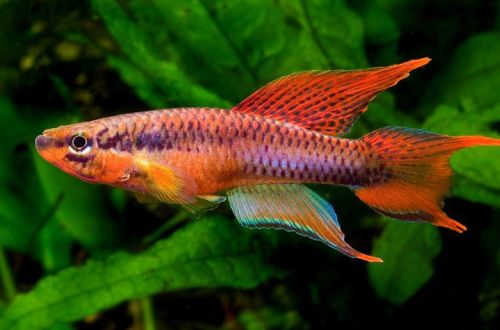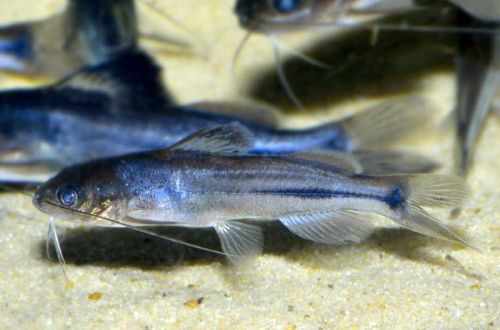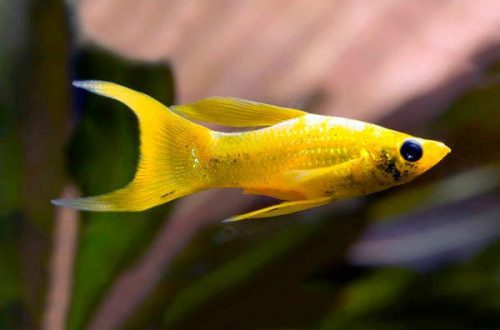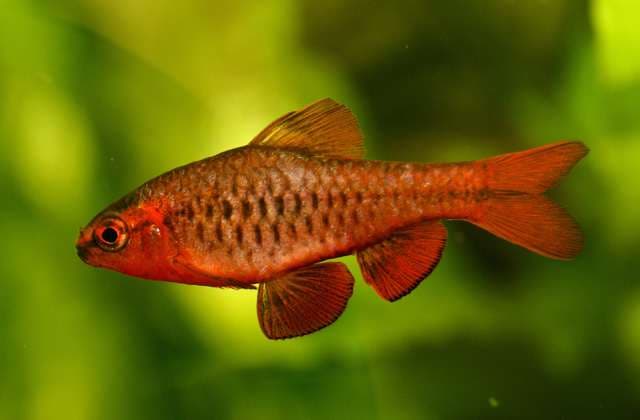
cherry barb
Cherry barb or Cherry puntius, scientific name Puntius titteya, belongs to the Cyprinidae family. Thanks to its bright red color, the fish will decorate any aquarium. It can become a real pet. Easy to maintain, gets along well with most species. A good choice for lovers of small nano aquariums.

Contents
Habitat
Initially, the cherry barbus was endemic to the river systems of the island of Sri Lanka. However, since its discovery at the beginning of the 20th century, it has been actively caught for the aquarium trade and over time, due to human fault, ended up in the waters of South and Southeast Asia. In the 2000s, wild fish were discovered in Central and South America.
Currently, these fish are supplied to home aquaria from commercial fish farms and are not caught from the wild.
In Sri Lanka, the typical habitat of this species is shaded streams and slow-flowing rivers. The fish stay in shallow water, swimming among the fallen branches and leaves. In nature, they feed on diatoms, various small invertebrates.
Brief information:
- The volume of the aquarium – from 40 liters.
- Temperature – 23-26°C
- Value pH — 6.0–8.0
- Water hardness – soft to medium hard (5-19 GH)
- Substrate type – any
- Lighting – subdued
- Brackish water – no
- Water movement is weak
- Size – up to 5 cm.
- Food – any food
- Life expectancy – up to 5 years
Description
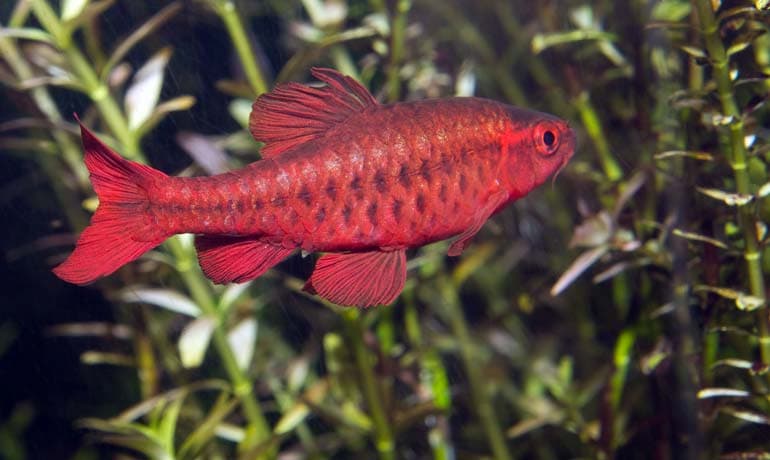
Cherry puntius refers to small species, the size of which does not exceed 5 cm. The fish has a large body with a bright cherry or maroon color, sometimes reaching maroon. A dark stripe is noticeable on the body, stretching from head to tail along the lateral line. During the spawning period, males intensify color. It is worth noting that with a single content, the color of the fish fades significantly.
Sexual dimorphism
Young fish are almost indistinguishable. Differences begin to appear only in adulthood. Males look more graceful and colorful than females.
Food
In the home aquarium, it will accept most popular dry, frozen and live foods. The basis of the daily diet can be daphnia, bloodworms, brine shrimp and other fish food products.
Keeping in an aquarium
The cherry barb has been kept in the artificial environment of aquariums for many decades and during this time has managed to adapt to conditions that differ from the natural habitat. The fish have successfully adapted to live in a wide range of pH and GH values, which greatly simplifies the water treatment process.
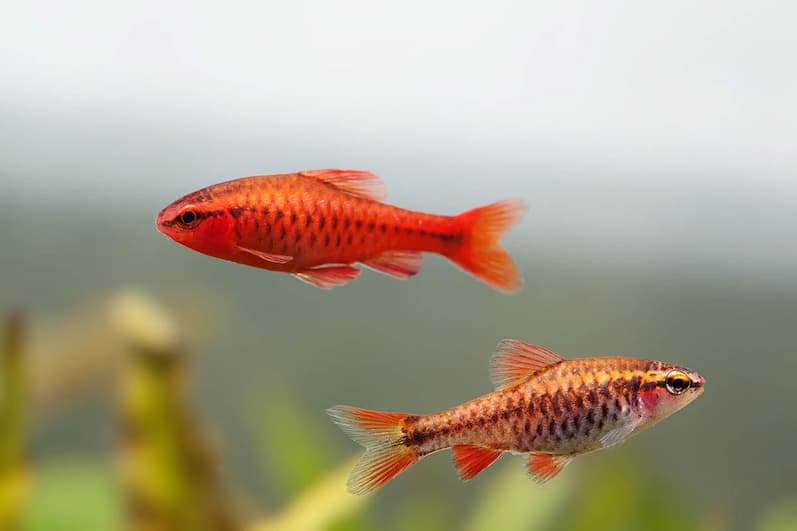
The optimal size of the aquarium for a group of 5-6 fish starts from 40-50 liters. In the design, it is recommended to provide free areas for swimming and places for shelters from thickets of plants. The presence of floating plants for additional shading of the aquarium is welcome. Natural snags will look harmonious. A dark substrate will favorably emphasize the color of the fish.
Behavior and Compatibility
The fish is compatible with most other peaceful species of comparable size. It is recommended to keep in a group. In the company of relatives, the activity of the Barbs will be concentrated within the group and they will not disturb the rest of the neighbors in the aquarium. They can live alone, but in this case they become less mobile, and in some cases the color fades.
Breeding and reproduction
Breeding requires a separate tank, the so-called spawning aquarium. The tank is equipped with a simple airlift filter and a heater. The only decoration can be artificial or live small-leaved aquatic plants and ferns placed at the bottom.
Recommended water parameters: 10-12GH, slightly acidic pH (6,0-6,5), temperature in the range of 24-26 °C.
The largest females and brightest males are placed in a spawning aquarium. The stimulus for spawning is a protein-rich diet.
With the onset of the breeding season, the female lays 1 to 3 eggs at a time, attaching them to plants. In total, the clutch can be about 300 eggs. At the end of spawning, adult fish are moved back, otherwise they can eat caviar and fry.
The fry appear after 24 hours. Feed should be microscopic food, such as brine shrimp nauplii.
Fish diseases
Cherry barbs in optimal conditions are not susceptible to disease. Health problems happen due to poor nutrition, contact with sick fish or in a neglected dirty aquarium. More information about diseases can be found in the section “Diseases of aquarium fish”.
Source: FishBase



